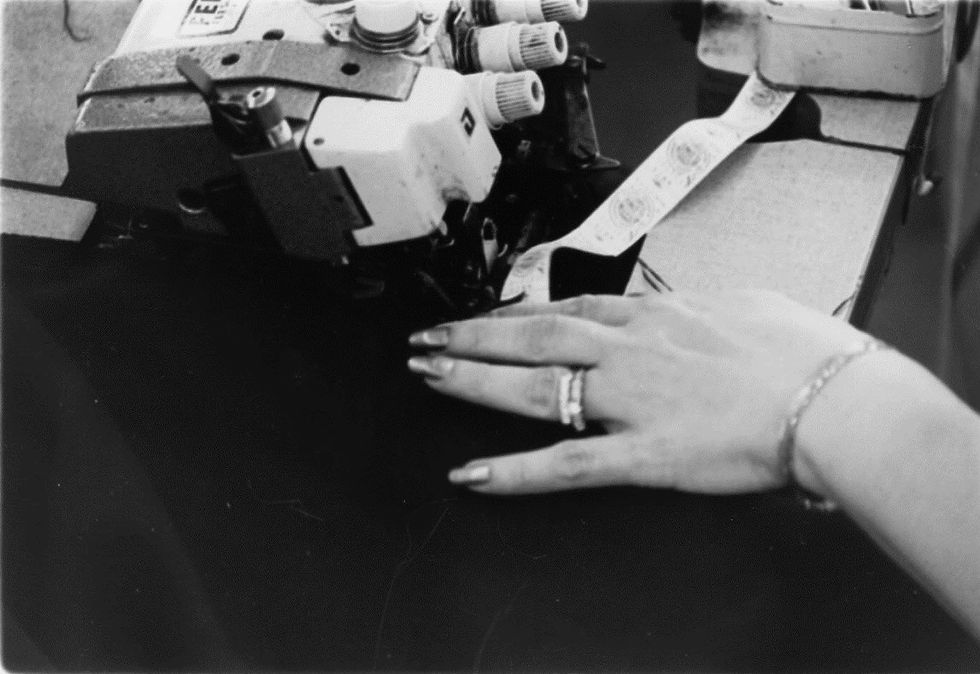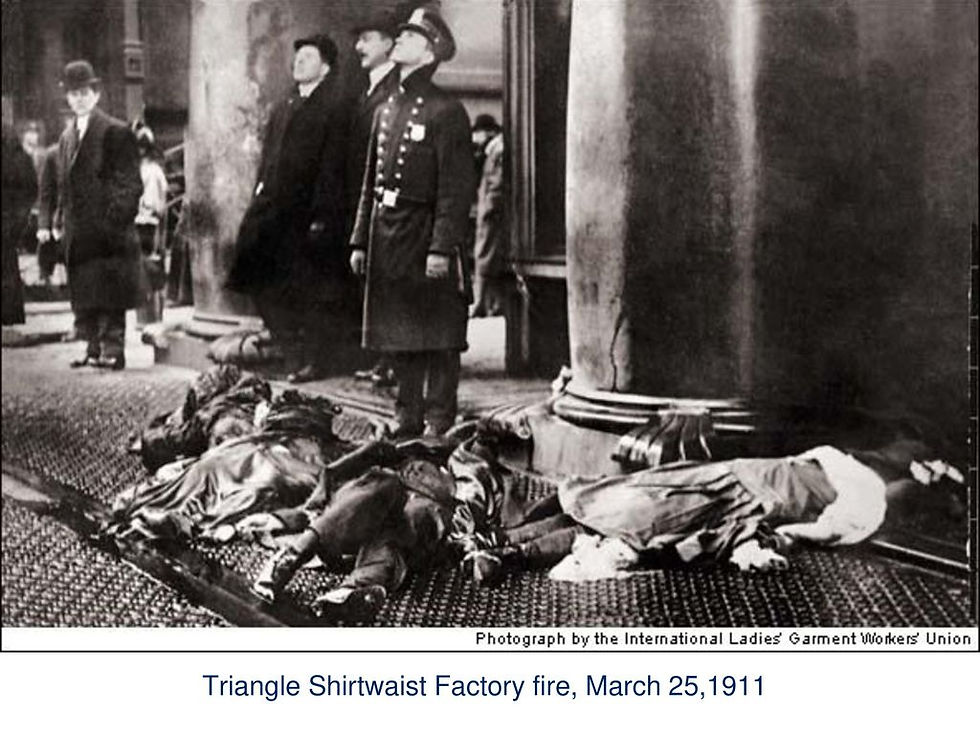The I.L.G.W.U. Another Fashion History Mystery: How Old are My Clothes ??
- Sep 16, 2019
- 3 min read
Updated: Oct 25, 2019

We all know to boycott brands when we hear about sweatshops and poor working conditions; however, there are many countries that have no chance of changing their bad working conditions and if you removed these factories and assembly lines, entire families will have no form of support...A double edged sword.

Not just recently, and not just overseas, but here in the US,
the working conditions within our own factories
have always needed to be addresses.

Women still need advocates within the workplace.
Without the efforts spanning almost 100 years, by the I.L.G.W.U., your workplace could have been very different.
Through the support of what is referred to as 'social unionism' AND the lengthy battle of outlining human rights laws, the I.L.G.W.U. came to be one of the largest labor unions in the United States, and the first of our unions to have a primarily female membership.
The letters stand for -
The International Ladies'
Garment Workers' Union
ILGWU was a key player in the labor history of the 20th Century.
After the 'fire at the Triangle Shirtwaist Factory' in 1911, had claimed the lives of 146 employees, many young women, it forced the acknowledgment and cooperation between organized labor, government, and most importantly, included social reformers.

Especially during WWll, many women were the ones putting up with appalling conditions and subjected to some pretty dumb and dangerous things.
During the 20th Century, this female oriented labor union was a hot button ticket.
Just as any civil rights group, the ILGWU had it's own enemies, even resulting in death. In 1949 an organizer, William Luryre, was murdered his trial stretching into the early '50s.
Early on, the ad campaigns were closely targeting women, as this was their area of buying power... Even if they were not allowed to drive themselves or have their own money.
Women's organizations have always been the first to recognize the value in equality among the genders and races, even as far back as abolitionist movements. Creating movements from the suffragettes of the early 20th century, and 60 years later, in fighting to pass the Equal Rights Amendment. (1970)

The union became a leading example, bringing forth social awareness, growing to make benefits available to workers; such as decent wages and safe working conditions. Eventually many more benefits we now have, such as unemployment, maternity leave, and so on.
The advertising campaign encouraging American housewives to only purchasing clothing having the I.L.G.W.U. label, stretched heavily over the course of 35 years or so.
The cool swag, reminding and rewarding union purchases, ranges from pins to sewing kits... Most importantly... my favorite, this groovy jingle you may know already. :)
So I didn't intend on giving a civil-rights/history lesson, but I will say that these tags in your vintage clothes are WAY more than just ways to date your clothing.
I digress... here is the basics when using ILGWU tags to date your clothing.
Predating 1950's Label:
If you have a garment with this label, and it's still legible... Awesome.
The item predates 1950.
The scalloped circle with a needle and thread in the background was adopted in the ’50s along with various lettering changes.

Label Change in 1963

1974
Union label recognition and use reached it's height in the 1950's and continued to be emphasized on into the 1970s because of the increasing costs of imported goods
Thus making to some changes in the union label to include "Made in the U.S.A." and an addition of the colors:
red, white, and blue.
There was also some government involvement in noting the country of origin long before... but that's another blog for another day.
Resources:
To view the extensive collection of the many variations of these labels
1974 - 1995 - Label Samples


Using judgement when dating clothing is important. While your item may have this tag you might still recognize styles to help you date the item. If you don't recognize it, ask!
When dating clothing, there are many clues to examine.
Ex: the hangers have business names on them... When did this dry cleaner go out of business, etc. Hardware, necklines, zippers, these are all clues.
Often you find contradicting information, so learning how to assess your clothes can be a great way to discover valuable items in your own closet.

The Fashion Guild website has extensive amounts of information and great message boards. Fashion Timeline Online
Their vintage label resource is awesome too.
If you find a neat label, share it with the guild so that others might benefit from your research. LABEL Search











Comments